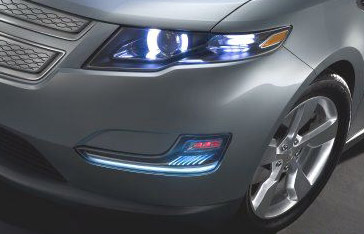In a conference
call on Thursday, GM hinted that it will be implementing a system that will allow two-way communication between the Chevrolet Volt’s
battery charger and electric utility companies.

One of the big potential problems with plug-in hybrid vehicles (cars that can be recharged by plugging them into a wall socket) is that if they’re ever widespread, and people plug them in all at the same time, it could overload the electricity grid.
But with the right equipment, plug-ins could actually be good for the grid. If the chargers had timers that put off charging until the wee hours of the night, the cars could make use of excess power-generating capacity on the grid. If the cars could communicate with each other, they could automatically stagger their charging, spreading out the load. And if they could communicate with utilities, they could charge when the utilities have extra power and stop charging if demand gets too high, helping to smooth out demand and prevent blackouts. There’s even a plan eventually to allow cars to deliver power back to the grid to help with peaks in electricity demand. Such smart charging could make it possible to incorporate more renewable energy, by helping to make up for the variable nature of wind and solar power.
Don’t settle for half the story.
Get paywall-free access to technology news for the here and now.